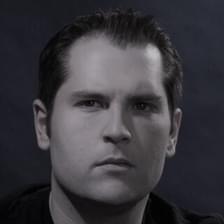Choosing larger river sizing
You can choose large sizing if you don’t think your opponent will fold top pair. Unlike the previous hand, the next day ...
Posted Oct 29, 2017
Contributor

Bart Hanson
Owner and Lead Pro
Professional Cash game trainer Bart Hanson has been producing strategy content for over fifteen years. He first started on Live at the Bike! back in 2005, then moved on to host "Cash Plays" on Poker Road, then "Deuce Plays" on Deuces Cracked and then to CrushLivePoker in 2012.
In his career as a professional poker player, Bart Hanson has:
-6 WSOP Final Tables
-Over 15 years of experience at the table
-Over $1,000,000 in tournament earnings
-Multiple appearances on ESPN and Poker Night in America
-4th place finish in 2019 WSOP Monster Stack
You can choose large sizing if you don’t think your opponent will fold top pair @CrushLivePoker
You can choose large sizing if you don’t think your opponent will fold top pair.
Unlike the previous hand, the next day at the Commerce I got into a beautiful spot where I did not think that my opponent was going to fold top pair given the action-- but this time I had pure value. In this spot, with about $2000 effective, I raised from UTG1 with 9♥ 9♦ to $35. The small blind, another unknown player sitting with a large amount of chips called, as did the big blind. We saw a K♦ 7♦ 3♣ flop three handed. It got checked over to me and I decided to make a small protection/value bet of $50. A lot of players would check here as they think that 9♠ on K73 is a way ahead way behind spot, but I find that the thinnest value can be obtained through flop betting, as players will peel wide. Also I could be up against as many as four overcards to my nines between the two players, and there is value in getting hands like QJ or KJ to fold.
The small blind called my flop bet pretty quickly and the big blind folded so we saw the turn headsup. Fortunately for me fourth street fell a beautiful 9♣ giving me second set and almost definitely the best hand. My opponent once again checked and this time I decided to go for larger sizing, $165, thinking that the small blind would continue to call down with a king. Again, he called rather quickly.
The river brought out a total blank, the 2♣ and my opponent checked to me a final time. With the pot being about $530, I thought about the small blinds’ range. Obviously it did not make a difference if he had missed a flush draw as he would not call my final bet (with the exception of betting small to induce a check raise). It is also important to note that the card on the flop that was not a diamond was a three and the turn card was a nine, two type of pairs that most likely would not call a river bet. But of his made hand range he has a ton of kings! It was also good for me that the front door draw bricked out as it makes it more likely that my opponent would call down with a king thinking that I may have missed a draw.
A lot of players approach this spot in the wrong way in my position. When they have a missed flush draw that has bet flop and turn, they barrel river. Say for example, instead of us having 99 we had Q♥ J♥. We bet the flop with a flush draw and continued to barrel the turn when we picked up straight draw equity. We whiff the river and realize we have no showdown value. We should go for three barrels here right? Wrong! Actually the fact that we block the heart flush draw means that our opponent is less likely to have it and this supersedes the fact that we have no showdown value. Or to put it simply it means that the small blind is going to have more Kx. But you see this type of three-barrel all the time in live poker, and you see the bluffer get called down.
However, for me this river was the best of both worlds holding 99. We did not block any of the kings that our opponent could have and we are not concerned with getting value from some of the flush draws that contain pairs. So I thought a large bet sizing had to be the best play here overbet the pot $575. My opponent took some time with it and finally called with KQ.
Many players would have left money on the table here, not recognizing how often their opponent would have a king and call to a larger sizing. But, they may have ran a three-barrel bluff with a missed flush draw themselves. The moral of this story is you have to recognize when your opponent is going to fold or call given the action and if you have value you should go big if you think that they are going to call down.